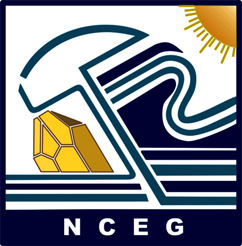The workshop is jointly organized by the National Centre of Excellence in Geology, University of Peshawar, Pakistan, the Faculty of Geo-Information Science and Earth Observation, University of Twente (ITC-UT), The Netherlands and the Asian Disaster Preparedness Centre (ADPC) from Bangkok, Thailand. The course focuses on reducing earthquake vulnerability through generating seismic microzoantion maps using geoinformation (GIS/Remote sensing) tools.
Earthquake generates seismic waves that cause ground shaking when arrives at ground surface. Earthquake induced ground shaking plays a key role in infrastructure damages and triggering secondary hazards such as landslides, flooding, tsunami, fire, liquefaction and ground deformation. Intensity and duration of ground shaking are determined by the earthquake source, medium of seismic wave's propagation; and the physical and geotechnical characteristics of the site. Spatial variation of the ground shaking at local scale is subject to the variation in topography, geomorphology and geology. Evaluating the impact of topography, geomorphology and geology on ground shaking is used for generating seismic microzonation maps that are often rarely available for earthquake prone areas. Applications of satellite derived remote sensing data and geospatial tools (remote sensing/GIS) are a new trend for generating seismic microzonation maps at low cost with regional coverage. These maps are of significant importance to use for reducing earthquake vulnerability.
The first week of the course will be devoted to creating an understanding of the geologic processes underlying earthquakes, the way in which remote sensing and seismological data can be used to monitor these processes and guide local site investigations using geophysical tools and geo-engineering practices. The course will start with an overview of earthquake hazard management and the role of geo-information and earth observation (e.g. satellite missions that can be used to study earthquake associated characteristics at a regional scale). The course venue i.e. northern Pakistan is located in one of the most earthquake prone areas with high earthquake vulnerability is taken as a case study for the course and thus an overview on the regional tectonics will be presented. A significant part of the first week is devoted for evaluating impact of topography, geomorphology and geology on earthquake induced seismic response using the geo-information data. Hands on exercises will be developed to guide the participants through the whole process. This is followed by an overview of recent geoinformation methods for earthquake hazard management.
During the weekend we plan to have an excursion to visit earthquake prone area that was devastated by the 2005 Kashmir earthquake to see the measures taken to reduce vulnerability. We are planning to visit some organizations working in the field of earthquake management and have a field practice with equipment in order to measure local site amplifications to make participants known with the state-of-the-art applications in the field.
The second week of the course will focus on the sustainable use of geo-information for hazard and risk assessment; and earthquake vulnerability reduction measures, by government organizations and also by NGO's. One dimensional soil response modeling will be demonstrated for obtaining spectral response curves, which are used to generate spectral acceleration maps. These form the basis for the loss estimation, when combined with elements at risk and their characteristics. The results of the loss estimations are used as the basis for the design of proper measures to reduce earthquake vulnerability. Towards the end, the participants are given group tasks involving remote sensing data analysis for reducing earthquake vulnerability followed by group presentations. The course ends with participant's workshop, with different presentations and evaluation of the course.
